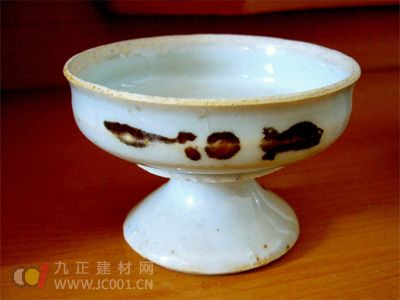The glaze red technique follows a similar process to that of blue and white porcelain, but with a key difference in the coloring agent used. Instead of cobalt for blue and white, copper is used to create the vibrant red color. This red glaze is applied and fired at high temperatures, resulting in a distinctive finish.
Glaze red pieces from the Yuan Dynasty typically exhibit certain characteristics. The body of the vessel tends to be thicker compared to blue and white wares of the same period. In the early stages, there were more white dragons, while toward the end of the Yuan Dynasty, white bases became more common. You can often see clear turning marks and tire marks on the surface. The early glaze was pale blue or grayish white, highly transparent, and had a glassy appearance. By the end of the Yuan era, the glaze turned into an egg-white-like, slightly reddish, oily white, which was different from the clear white glaze seen on large blue and white porcelain. The red color was unstable, ranging from light red to deep red, often mixed with gray tones, and sometimes showed halos around the red areas. These effects were usually found along the edges where the copper-based pigment was applied. Due to high firing temperatures, many pieces suffered from burning issues.

The decorative techniques used in glaze red during the Yuan Dynasty were less advanced than those of blue and white porcelain at the time. In the early stages, artisans used a smearing method, applying red glaze either by filling in patterns after embossing or by using stencils to create white flowers against a red background. Later, during the late Yuan period, line drawing with red glaze emerged. This method was simple, involving sketching outlines and then lightly coloring them, making it less complex than the detailed blue and white painting styles.
As blue and white porcelain remained popular for a long time, the demand for red glaze also increased, leading to numerous imitations. However, most of these imitations are not reliable. They differ significantly from genuine Yuan-era pieces, especially in several key aspects. For instance, some imitations have overly thin bodies, unclear bottoms, or even artificial "kiln red" effects. The glaze may appear gray, rough, or dull, lacking the smooth, translucent quality of authentic pieces. The red color is often too uniform, appearing dark or iron red without the natural variations seen in real glaze red. Some imitations use different pigments, resulting in colors that don’t match the traditional red of Yuan glaze. Additionally, some designs mimic Ming or Qing styles, or attempt to replicate blue and white patterns, but they lack the authenticity of true Yuan red-glazed wares. Many of these imitations include inscriptions such as “Da Yuan†or specific years, which are not genuine.
Smart High Bay Light,Smart UFO High Bay Light,Smart Bulb Lamp,Smart Light Bulb,Smart Horizontal Street Light
Foshan Extrlux Co., Ltd. , https://www.extrlux.com